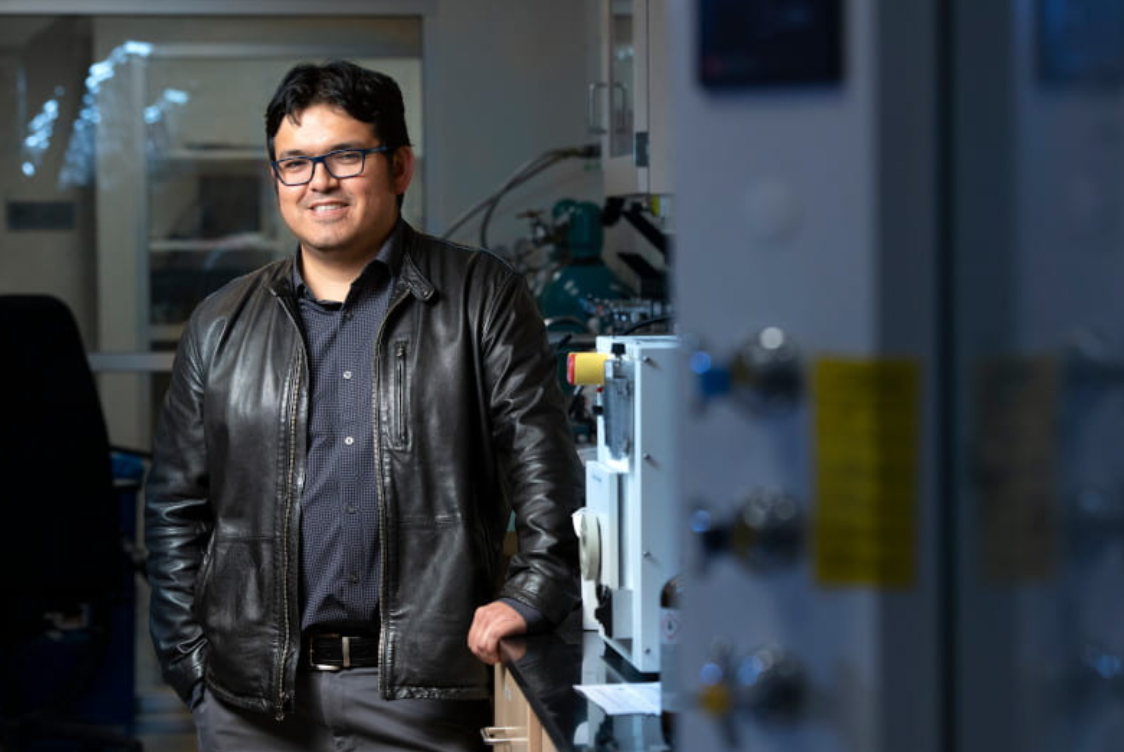
“If you want computers in space that are going to last, this is one way to make that happen,” Luis Jauregui says. Steve Zylius / UC Irvine
UC Irvine scientists discover new state of quantum matter
- The discovery could lead to radiation-proof, low-power computers.
- The breakthrough opens possibilities for space tech and quantum devices.
- This research supported in part by the National Science Foundation and the Department of Energy.
Irvine, Calif., July 30, 2025 — University of California, Irvine researchers have identified a new state of quantum matter – something that until now existed only in theory. The discovery could lay the foundation for next-generation technologies, including computers that can operate reliably at low powers even in the harsh radiation of outer space.
“It’s a new phase of matter, similar to how water can exist as liquid, ice or vapor,” said Luis A. Jauregui, professor of physics & astronomy at UC Irvine and lead author of the study, which appears in Physical Review Letters. “It’s only been theoretically predicted – no one has ever measured it until now.”
What is this new matter?
The newly discovered state is built around what are called excitons – a pairing of electrons and the “holes” they leave behind in materials. In this new form, electrons and holes spin together in the same direction, creating a unified, glowing phase of matter.
“It’s its own new thing,” Jauregui said. “If we could hold it in our hands, it would glow a bright, high-frequency light.”
This novel quantum state only exists in the lab so far, within a material called hafnium pentatelluride. UC Irvine postdoctoral researcher Jinyu Liu developed it, the paper’s first author. The exotic matter appears when the material is subjected to powerful magnetic fields – up to 70 Teslas – at a national research laboratory in New Mexico.
Why it matters
When the magnetic field is applied, the material undergoes a sudden and dramatic change. “The material’s ability to carry electricity suddenly drops, showing that it has transformed into this exotic state,” Jauregui explained.
This transformation could pave the way for spin-based electronics, or “spintronics,” that carry information using electron spin instead of electric charge – potentially revolutionizing energy efficiency in electronics.
But one of the most tantalizing aspects of the discovery is its resilience to radiation. That means it could be used in space missions, where exposure to cosmic rays poses a significant challenge to traditional electronics.
“If you want computers in space that are going to last, this is one way to make that happen,” Jauregui said.
A team effort
The research was made possible through collaborations between scientists at UC Irvine and partners at Los Alamos National Laboratory and the National High Magnetic Field Laboratory in Florida. Alongside Jauregui and Liu, the team included graduate students, undergraduate researchers, and leading theorists in quantum physics.
“We don’t know yet what possibilities will open as a result,” Jauregui added.
While this new state of matter is still confined to experimental settings, its potential impact could stretch as far as Mars—quite literally.
This research was partially supported by the National Science Foundation and the Department of Energy.
